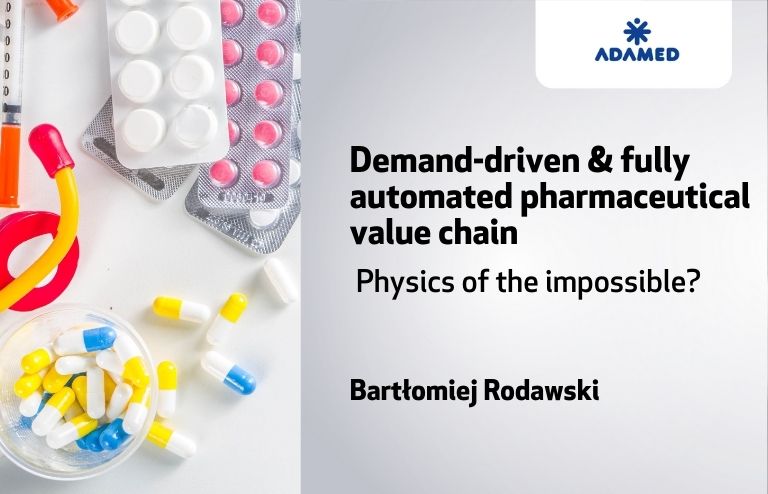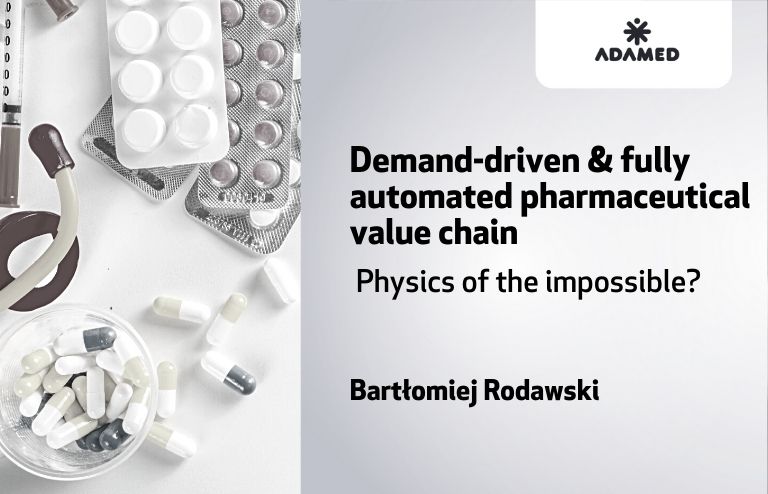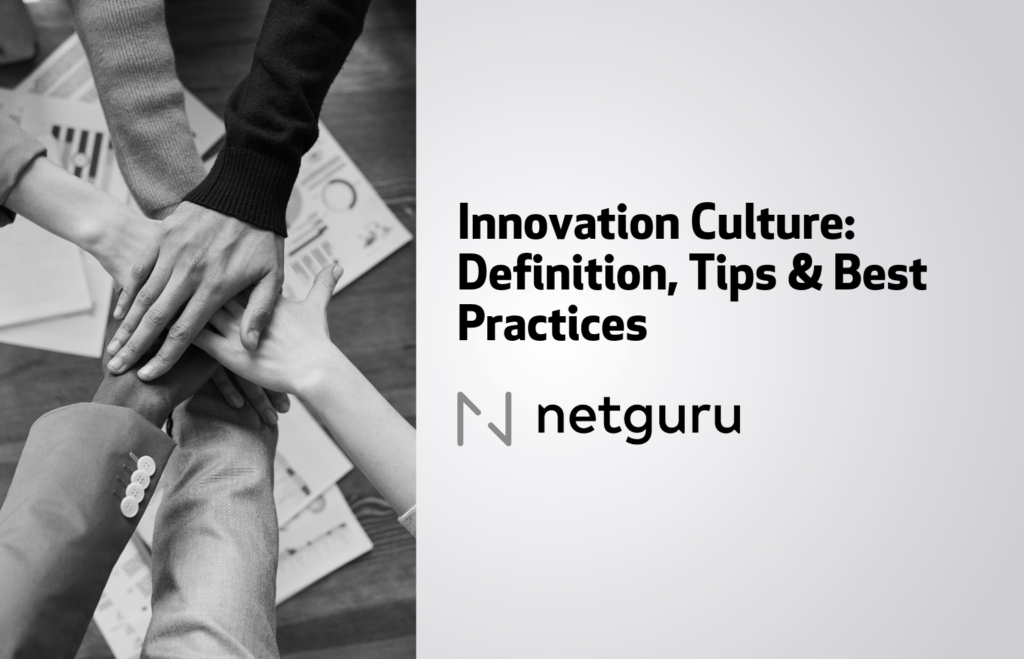Bartłomiej Rodawski, Adamed Pharma
Pharmaceutical supply chains are typically regarded as neither cost-effective nor flexible, especially when compared to those of other industries. [1]. Consequently, the pharma industry isn’t the best for finding examples of efficient supply chains, yet numerous best practices can be tracked in other sectors, such as the apparel, automotive and FMCG industries.
This is interesting because, these days, some of these latter companies – whose value chains are perceived as highly competitive – are entering the pharmaceutical business in an attempt to move the pill both faster and more conveniently to the patient [2].
Two scenarios for the future are possible for the pharma supply chain management:
- Pharmaceutical companies implement some minor changes within their supply chains and watch as newcomers, with agile and innovative strategies, gain their share in the pharmaceutical business.
- Pharmaceutical companies reinvent their supply chains and become more competitive. Digitalization and automation (incl. robotization) have prominent roles here.
As far as scenario 2 is concerned, the following questions could be posed: is it possible to imagine a situation where real demand triggers the production of another batch of a medicine, and is it possible that said production is fully automated?
To answer the above questions, one needs to break down the elements of the supply chain into two pieces. Firstly, there is distribution, starting from the customer (patient) and going up to the manufacturer (incl. the pharmacy and wholesaler). Secondly, there are the areas of manufacturing and quality.

Digital pharma distribution channel
A lot has been said about customer experience recently. To gain extra profit, a company needs to exceed customer expectations. On the contrary, unsatisfied clients equate to losses and a shrinking business. According to KPMG research, brands with superior customer experience doubled their revenue growth between 2010-2015, according to figures from the UK FTSE 100 INDEX [3].
Nowadays, patients demand a greater choice of products, various delivery options and faster service. To provide a positive customer experience and an agile response to customer needs, companies cooperating within distribution channels have to implement more collaborative approaches and orchestrate flows of demand information up the channel. One of the best examples here is ZARA, which uses real demand data to make production and even design decisions [4].
Pharma companies can operate in the same manner, changing their mode of collaboration with distributors and wholesalers from transactional to truly integrated. Here, a real-time flow of demand and inventory data among the partners’ IT systems is necessary. Next, based on cloud computing (Amazon Web Services, Google Cloud Platform, Microsoft Azure) and using a multi-echelon inventory approach, the right production schedules could be delivered to the production site automatically.
Adamed has already started orchestrating pharmaceutical distribution channels throughout, with the centralization of inventory replenishment decision and the digitalization of demand data. In early 2000, Adamed started a VMI (Vendor Managed Inventory) project with its main distributors. To achieve the project goal, the IT systems of cooperating companies were integrated and the data on sales and current inventory were interchanged automatically on a daily basis.
The second step was integration with pharmacies (there are more than 10 000 pharmacies in Poland). As a result, Adamed has full visibility on sales and inventory position through the distribution channel (including its warehouse, but also distributors and retailers). The above is a great basis for moving from an MTS (Make To Stock-based on-demand forecast) to MTO (Make To Order, which means real demand) replenishment strategy.
Automated manufacturing in the pharmaceutical industry
As the signal from the distribution channel goes up the chain and reaches a manufacturing site, it is high time to process the production order. Here, so-called execution systems, like MES (Manufacturing Execution System), LIMS/LES (Laboratory Information Management System/ Laboratory Execution System) and WMS (Warehouse Management System) are harnessed.

By using them all the production order is processed automatically, alongside batch documentation (paperless). But what about physical manufacturing? What level of manufacturing automation is possible?
This film shows that sky is the limit. In fact, all the subprocesses could be automated. In reality, various solutions (often referred to as the Industry 4.0 approach) are possible, and they should be aligned with the value chain strategy.
Two years ago Adamed launched its Industry 4.0 transformation program. It has 3 pillars:
- The digitalization of all main processes (currently 4 execution systems are being implemented / upgraded and integrated: MES, LIMS/LES, WMS, EDMS)
- Automation and robotization – the chosen processes are being automated and robotized. This includes, for example, internal logistics: packaging centre and distribution warehouse, inhaler packaging robots, dissolution robots, and palletizing robots.
- Competences – as more processes are automated, employees need to develop new competencies; hence various training programmes are being implemented.
To recap, the digitalization and automatization of pharma value chains can provide a competitive edge. Diversified solutions and tools can be implemented, and pharma supply chains could, accordingly, become more innovative. Today, with the right mix of implemented technologies, it is possible to replenish the medicine based on real demand, with very limited human intervention.
Yet in the real business world, it is not the sky but the budget that is the limit. While analyzing the costs and benefits steaming from value chain redesign one cannot boil down the financial calculations to just the costs of the workforce but should further extend analysis.
Adamed Pharma is a partner of MIT EF CEE Autumn 2021 acceleration program. Want to know more about them? Check out what are they looking for in the startup world.
[2] https://www.cnbc.com/2020/11/17/amazon-pharmacy-free-prescription-delivery-for-prime-members.html
[3] https://assets.kpmg/content/dam/kpmg/pdf/2016/05/demand-driven-supply-chain-report.pdf
[4] http://idea-space.eu:19001/up/319cc877736053b53fe46efc79a29be6.pdf






